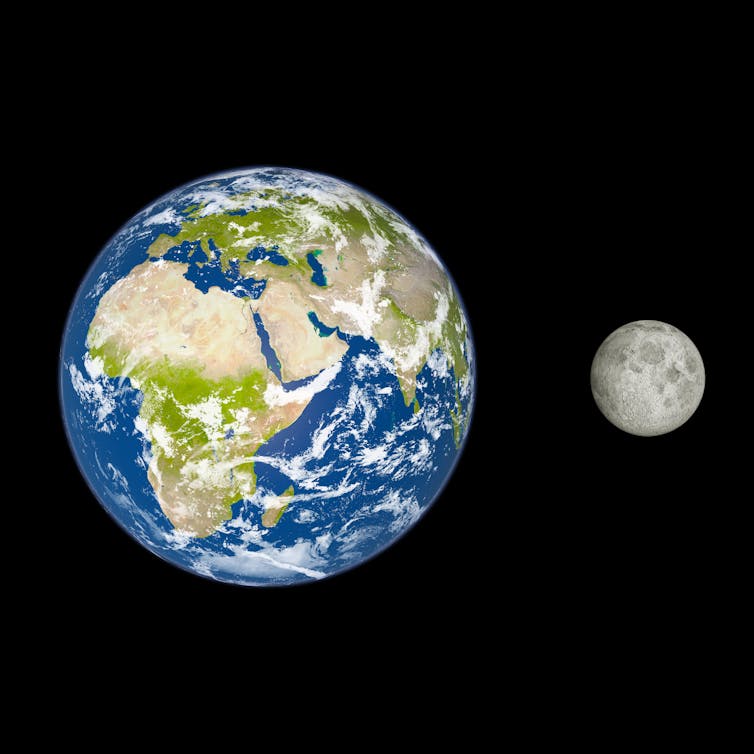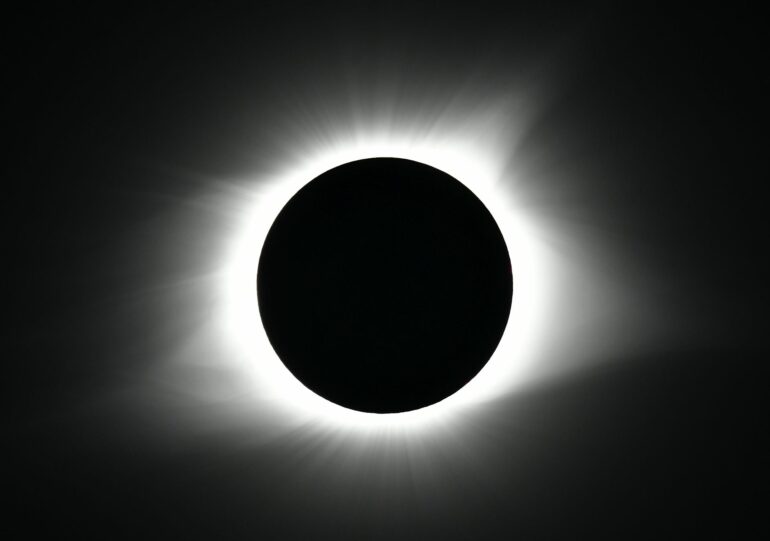On April 8, 2024, millions across the U.S. will have the once-in-a-lifetime chance to view a total solar eclipse. Cities including Austin, Texas; Buffalo, New York; and Cleveland, Ohio, will have a direct view of this rare cosmic event that lasts for just a few hours.
While you can see many astronomical events, such as comets and meteor showers, from anywhere on Earth, eclipses are different. You need to travel to what’s called the path of totality to experience the full eclipse. Only certain places get an eclipse’s full show, and that’s because of scale.
The relatively small size of the Moon and its shadow make eclipses truly once-in-a-lifetime opportunities. On average, total solar eclipses are visible somewhere on Earth once every few years. But from any one location on Earth, it is roughly 375 years between solar eclipses.
I’m an astronomer, but I have never seen a total solar eclipse, so I plan to drive to Erie, Pennsylvania, in the path of totality, for this one. This is one of the few chances I have to see a total eclipse without making a much more expensive trip to someplace more remote. Many people have asked me why nearby eclipses are so rare, and the answer is related to the size of the Moon and its distance from the Sun.
Those in the path of totality will have the opportunity to see a total solar eclipse this April.
Size and scale
You can observe a solar eclipse when the Moon passes in front of the Sun, blocking some or all of the Sun from view. For people on Earth to be able to see an eclipse, the Moon, while orbiting around the Earth, must lie exactly along the observer’s line of sight with the Sun. Only some observers will see an eclipse, though, because not everyone’s view of the Sun will be blocked by the Moon on the day of an eclipse.
The fact that solar eclipses happen at all is a bit of a numerical coincidence. It just so happens that the Sun is approximately 400 times larger than the Moon and also 400 times more distant from the Earth.

Earth’s size compared with the Moon. Distances not to scale.
Laara Cerman/Leigh Righton/Stockbyte via Getty Images
So, even though the Moon is much smaller than the Sun, it is just close enough to Earth to appear the same size as the Sun when seen from Earth.
For example, your pinky finger is much, much smaller than the Sun, but if you hold it up at arm’s length, it appears to your eye to be large enough to block out the Sun. The Moon can do the same thing – it can block out the Sun if it’s lined up perfectly with the Sun from your point of view.
Path of totality
When the Earth, Moon and Sun line up perfectly, the Moon casts a shadow onto the Earth. Since the Moon is round, its shadow is round as it lands on Earth. The only people who see the eclipse are those in the area on Earth where the shadow lands at a given moment.
The Moon is…



